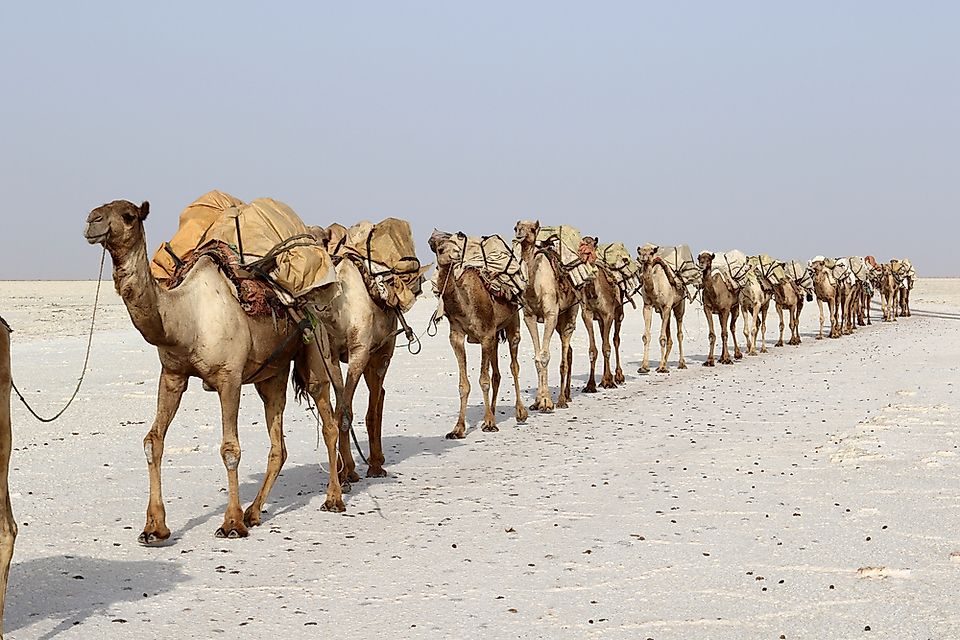Where Is the Danakil Desert?

Where Is the Danakil Desert?
The Danakil Desert is a desert in Africa that covers parts of northeast Ethiopia, southern Eritrea, and north-western Djibouti. It is located in Afar Triangle and covers 136,956 square kilometres of dry land. The area is notable for the presence of volcanoes and extremely high temperatures that can exceed 50 degrees Celsius during the day. The region receives less than one inch of rainfall annually. The Danakil Desert is among the lowest and sultry regions on Earth. A small population of Afar people live in the Danakil Desert and practise salt mining.
Geological Activities
The geology of the Danakil Desert is shaped by volcanic and tectonic activities, climatic change, and intermittent erosion. The movement of tectonic plates that led to the separation of Asia from Africa caused the desert's geological formation. A chain of mountains was created and then eroded in the Palaeozoic Era. The sea overflow led to the development of layers of sandstone and limestone offshore. Sandstone formed on top of the limestone due to the rising of the land, and lava poured through the cracks due to tectonic movements, covering sediment deposits.
The Danakil Desert has many lakes that were formed by the flow of lava which blocked a number of valleys. Lake Afrera is notable, as it has thick salty crusts on its banks. The Danakil Alps, which flanks the region to the east, is a tabular mountain system with less volcanic cones. It is the highest tabular mountain in Mount Ramlo, with a height of 2130 metres. Lake Asale (116 meters below the sea level) and Lake Giuletti (80 metres below sea level) are other local lakes in the desert and are part of the Danakil Depression.
Economic History
Abdu Ibrahim Mohamed, an inhabitant of the Danakil Desert, began collecting salt at the age of 15. He transported the salt using camels and termed it a ‘’white gold’’ trade. Mohamed is currently 51 years old, is retired, and has given the camels to his son to continue the salt trade. However, the use of camels to transport salt is changing since a tarmac road has been built across the northern Afar region. The construction of this tarmac is concerning to salt miners and traders, as increased accessibility may attract industrial mining companies with modern mining techniques, thus squeezing out local miners and traders. Almost all people who live in the desert area have earned a living through the salt convoy, and are unhappy that large salt companies are trying to operate in the region.
Human Existence
The Afar people practice salt mining, taking the salt to sell in the nearest town, which is a two-day travel. The salt is transported by camels, which are loaded with up to thirty salt blocks that each weigh four kilograms. Traders travel to the nearest town with guards as protection from thieves.











